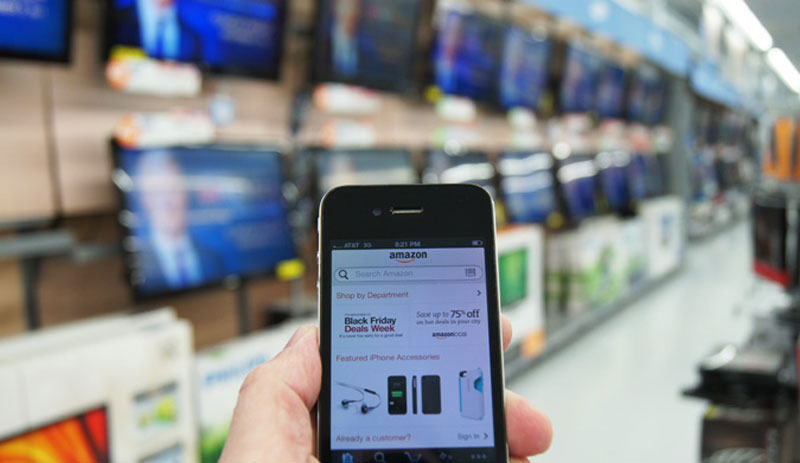
In a previous COMM 464 class, we brainstormed the effects of disruptive technologies on conventional forms of doing business. One example was the concept of “showrooming,” the practice of physically visiting your traditional brick-and-mortar store to examine a product, then purchasing that product online (often times at a lower price). This has challenged businesses to compete beyond the storefront and into larger online markets, urging them to price-match with more digital-savvy retailers.
Amazon is the perfect example of this (see full article on Amazon showrooming here). Target and Best Buy are among the many retail giants facing the threat of showrooming, being forced to respond to more and more consumers using mobile apps to scan product barcodes for cheaper deals elsewhere, and having their profit margins squeezed as a result. Large retailers have been coping with price-matching policies and apps of their own to combat Amazon, but smaller businesses with far fewer resources and capacity may find themselves driven out of the market.
In recent years however, we are seeing a new trend emerge that may even disrupt the disruptor. “Reverse-showrooming” is exactly as its name implies: consumers are increasingly viewing and researching products online, and then heading to traditional brick-and-mortar stores to actually make the purchase. It will be extremely interesting to see how the online business landscape changes and influences business and marketing strategies over the next few years.
Photo: http://www.aaronweiche.com/wp-content/uploads/2012/11/mobile-showrooming-amazon800.jpg
Main article: http://www.businessinsider.com/reverse-showrooming-bricks-and-mortar-retailers-fight-back-2-2014-2